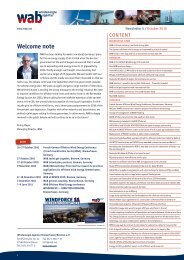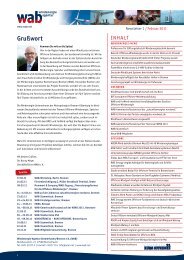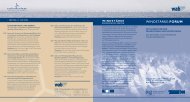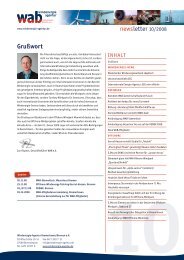Wind Energy
Wind Energy
Wind Energy
You also want an ePaper? Increase the reach of your titles
YUMPU automatically turns print PDFs into web optimized ePapers that Google loves.
OffshOre #2 | The Magazine<br />
a strOng fOOtIng<br />
fOr hIgh tOwers<br />
The optimisation of the foundations has been driving the engineers<br />
since the initial concept sketches for offshore wind farms. The steel<br />
and concrete footings have to provide a secure foothold while being as<br />
cost-effective to manufacture and assemble as possible. This leads to<br />
various solutions for different wind farms: For a long time, the simplest<br />
case was so-called gravity foundations where the extended tower of the<br />
wind turbine was anchored into the seabed via a concrete base. With<br />
ever larger turbines and increasing water depths, engineers discovered<br />
that monopiles, where the extension of the tower is driven directly into<br />
Tripile Cuxhaven Steel Construction Jacket Weser<strong>Wind</strong><br />
60<br />
the ground, are the best solution. For greater water depths and larger<br />
turbines with 5 MW or more – especially in the German North Sea – various<br />
types of multi legs were developed. Depending on the steel price,<br />
assembly technology and philosophy, companies started using different<br />
models. Most recently, engineers have also been using gravity foundations<br />
for wind turbines with 5 MW and more. With their 4500 tons these<br />
concrete footings now weigh more than five express train railcars. For<br />
water depths beyond the 50 meter mark, new systems are being created<br />
which allow for a floating attachment of the wind turbines.








